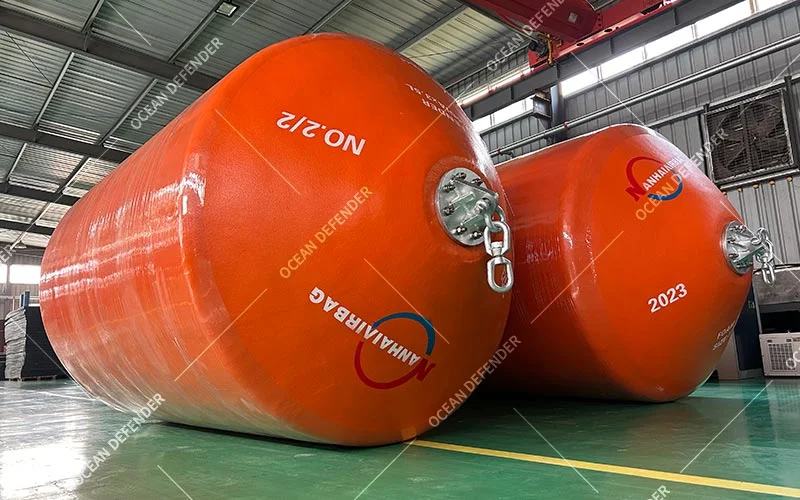Maintenance Tips for Foam-Filled Fenders
05/22/2025Comment maximiser la durée de vie des défenses en caoutchouc ?
05/23/2025Why Foam Fenders Are Better Than Rubber?
When it comes to protecting your vessel or port, choosing the right défense marine isn’t just important—it’s crucial. You might be comparing modern défenses remplies de mousse with traditional rubber types, wondering which offers better value, safety, and durability. You’re in the right place.
Whether you’re managing a busy shipping terminal, outfitting tugboats, or upgrading your yacht, here’s why more marine professionals are switching to this next-generation solution.
Foam Fenders Offer Superior Impact Absorption
They don’t burst or deflate—they absorb impact and recover.
Unlike rubber fenders, which can crack or rupture under pressure, ailes en mousse are built with a solid EVA core and a durable polyurethane skin. That means they compress on impact and rebound without losing their shape, even after repeated use.
Example: A port in Singapore replaced rubber with foam filled fender and saw a 30% drop in downtime in one year.
Foam Filled Fenders Require Minimal Maintenance
No inflation. No pressure checks. Just long-term reliability.
Rubber fenders need constant monitoring to avoid air loss. But with défenses remplies de mousse, there’s no internal air system to manage. Their self-contained construction means zero inflation hassle.

Foam Marine Fender Performs in Harsh Conditions
Engineered for saltwater, sunlight, and tough berthing environments.
These fenders use a rugged polyurethane skin that resists abrasion, chemicals, and UV exposure. Foam marine fender are especially suited for offshore terminals, navy docks, and heavy-duty berthing areas.
Longer Lifespan with Foam-Based Fender Technology
Lower lifetime cost, fewer replacements.
Although ailes en mousse may cost more up front, they often outlast rubber by 3 to 5 years, significantly reducing repair and replacement costs.
Floating Foam Fender Adapts to Vessel Height
Buoyant design ensures contact even with high freeboard vessels.
The natural buoyancy of ailes en mousse allows them to rise and fall with the tide, offering consistent protection for large ships like tankers and cruise liners—where rubber fenders often fall short.

Custom Foam Fender Solutions for Every Docking Scenario
Tailored designs for your vessel, port, or offshore platform.
From tugboats to container ships, défenses remplies de mousse can be customized in size, shape, and energy rating. Optional features like chain nets or company branding are also available.
People Also Ask:
Are foam fenders better than rubber fenders?
Yes. Foam fenders are more durable, require little to no maintenance, and recover their shape after impact.
What are foam filled fender used for?
They’re widely used for STS (ship-to-ship) transfers, port berthing, and offshore operations due to their durability and floating performance.
How long do foam marine fenders last?
Généralement 10 to 15 years, depending on conditions and frequency of use.
What makes foam fender different from rubber ones?
Rubber fenders can rupture or deflate. Foam fender use a solid core that absorbs impact without losing effectiveness.
Looking for a Reliable Foam Fender Supplier?
If you’re ready to upgrade from outdated rubber systems, we’re here to help. At NANHAÏ, we supply high-performance marine fenders tailored to your vessel’s specific needs.
Contactez-nous dès aujourd'hui for expert advice and a competitive quote.
